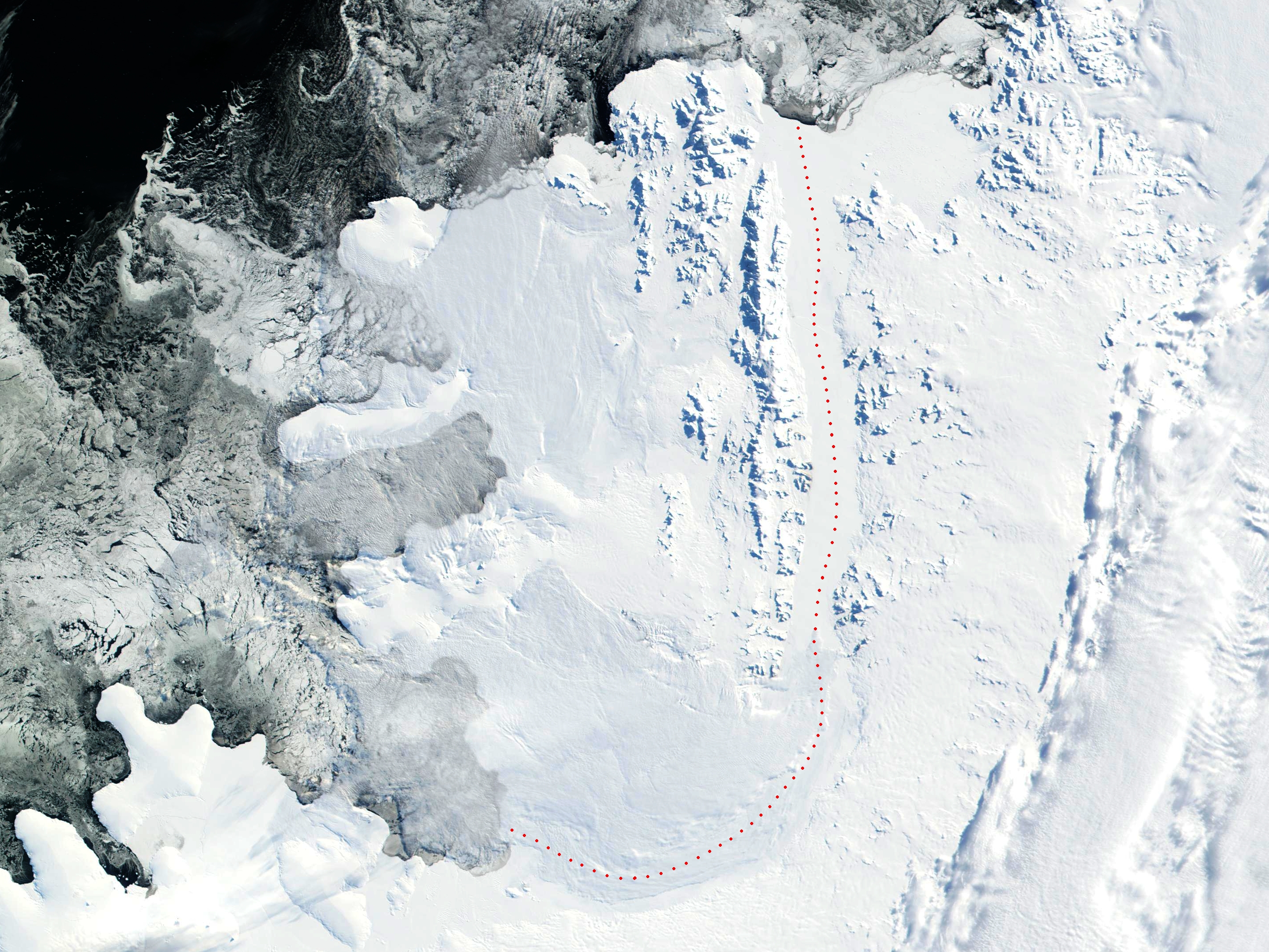Balgari Nunatak on:
[Wikipedia]
[Google]
[Amazon]

 Balgari Nunatak (, ‘Nunatak Balgari’ /'nunatak 'bɤlgari/) is the mostly ice-free rocky ridge extending 800 m in east–west direction and 550 m wide, rising to 282 mReference Elevation Model of Antarctica.
Balgari Nunatak (, ‘Nunatak Balgari’ /'nunatak 'bɤlgari/) is the mostly ice-free rocky ridge extending 800 m in east–west direction and 550 m wide, rising to 282 mReference Elevation Model of Antarctica.
Polar Geospatial Center. University of Minnesota, 2019 on the south side of
Antarctic Digital Database (ADD).
Scale 1:250000 topographic map of Antarctica. Scientific Committee on Antarctic Research (SCAR). Since 1993, regularly upgraded and updated
Bulgarian Antarctic Gazetteer.
basic data
in English)
Balgari Nunatak.
SCAR
Balgari Nunatak.
Adjusted Copernix satellite image Nunataks of Alexander Island Bulgaria and the Antarctic {{AlexanderIsland-geo-stub
 Balgari Nunatak (, ‘Nunatak Balgari’ /'nunatak 'bɤlgari/) is the mostly ice-free rocky ridge extending 800 m in east–west direction and 550 m wide, rising to 282 mReference Elevation Model of Antarctica.
Balgari Nunatak (, ‘Nunatak Balgari’ /'nunatak 'bɤlgari/) is the mostly ice-free rocky ridge extending 800 m in east–west direction and 550 m wide, rising to 282 mReference Elevation Model of Antarctica.Polar Geospatial Center. University of Minnesota, 2019 on the south side of
Bongrain Ice Piedmont
Bongrain Ice Piedmont () is an ice piedmont, 27 nautical miles long in a northeast–southwest direction and 12 nautical miles wide in its widest part, occupying the northwest coastal area of Alexander Island. Mount Bayonne lies to the east and ...
in northern Alexander Island
Alexander Island, which is also known as Alexander I Island, Alexander I Land, Alexander Land, Alexander I Archipelago, and Zemlja Alexandra I, is the largest island of Antarctica. It lies in the Bellingshausen Sea west of Palmer Land, Antarcti ...
, Antarctica
Antarctica () is Earth's southernmost and least-populated continent. Situated almost entirely south of the Antarctic Circle and surrounded by the Southern Ocean (also known as the Antarctic Ocean), it contains the geographic South Pole. ...
. It surmounts Lazarev Bay
Lazarev Bay is a rectangular bay, long and wide, which separates Alexander Island from Rothschild Island and is bounded on the south side by the Wilkins Ice Shelf, which joins the east portion of Rothschild Island and the west portion of Alexande ...
to the south. The nunatak was visited on 3 January 1988 by the geological survey party of Christo Pimpirev
Christo Pimpirev () is a Bulgarian scientist (geologist) and polar explorer.
Academic career
He was born on Friday, 13 February 1953 in Sofia, Bulgaria. After graduating from Sofia University with a master's degree in geology in 1978 and getti ...
and Borislav Kamenov (First Bulgarian Antarctic Expedition), and Philip Nell and Peter Marquis (British Antarctic Survey
The British Antarctic Survey (BAS) is the United Kingdom's national polar research institute. It has a dual purpose, to conduct polar science, enabling better understanding of list of global issues, global issues, and to provide an active prese ...
). On that occasion, a small rocky offshoot situated 360 m southeast of the nunatak's summit was designated as the site for a future Bulgarian Antarctic base. However, the two prefabricated huts brought for the purpose on board the Soviet
The Union of Soviet Socialist Republics. (USSR), commonly known as the Soviet Union, was a List of former transcontinental countries#Since 1700, transcontinental country that spanned much of Eurasia from 1922 until Dissolution of the Soviet ...
Research Ship ''Mikhail Somov
Mikhail Mikhailovich Somov (; , in Moscow – 30 December 1973, in Leningrad) was a Soviet oceanologist, polar explorer, Doctor of Geographical Sciences (1954).
Somov graduated from the Moscow Hydrometeorological Institute in 1937. In 1939, h ...
'' in April 1988 could not be helicoptered ashore due to bad weather, and were erected on Livingston Island
Livingston Island (Russian name ''Smolensk'', ) is an Antarctic island in the Southern Ocean, part of the South Shetland Islands, South Shetlands Archipelago, a group of List of Antarctic and subantarctic islands, Antarctic islands north of the ...
instead.Ivanov, L. and N. Ivanova. ''The World of Antarctica''. Generis Publishing, 2022. 241 pp.
The feature is so named in connection with the first choice of a site for the Bulgarian Antarctic base.
Location
The ridge is located at , which is 630 m from the seashore, 1.85 km north by west ofCape Vostok
Cape Vostok () is a rocky headland which forms the west extremity of the Havre Mountains and the northwest extremity of Alexander Island in Antarctica. It was discovered by the First Russian Antarctic Expedition in 1821, led by Fabian Gottlieb von ...
, 13.4 km west of Boyn Ridge and 6.1 km northwest of Saint George Peak.
Maps
* British Antarctic Territory. Scale 1:250000 topographic map. Sheet SR19-20/5. APC UK, 1991Antarctic Digital Database (ADD).
Scale 1:250000 topographic map of Antarctica. Scientific Committee on Antarctic Research (SCAR). Since 1993, regularly upgraded and updated
Notes
References
Bulgarian Antarctic Gazetteer.
Antarctic Place-names Commission
The Antarctic Place-names Commission was established by the Bulgarian Antarctic Institute in 1994, and since 2001 has been a body affiliated with the Ministry of Foreign Affairs (Bulgaria), Ministry of Foreign Affairs of Bulgaria.
The Commis ...
. (details in Bulgarianbasic data
in English)
Balgari Nunatak.
SCAR
Composite Gazetteer of Antarctica
The Composite Gazetteer of Antarctica (CGA) of the Scientific Committee on Antarctic Research (SCAR) is the authoritative international gazetteer containing all Antarctic toponyms published in national gazetteers, plus basic information about th ...
External links
Balgari Nunatak.
Adjusted Copernix satellite image Nunataks of Alexander Island Bulgaria and the Antarctic {{AlexanderIsland-geo-stub